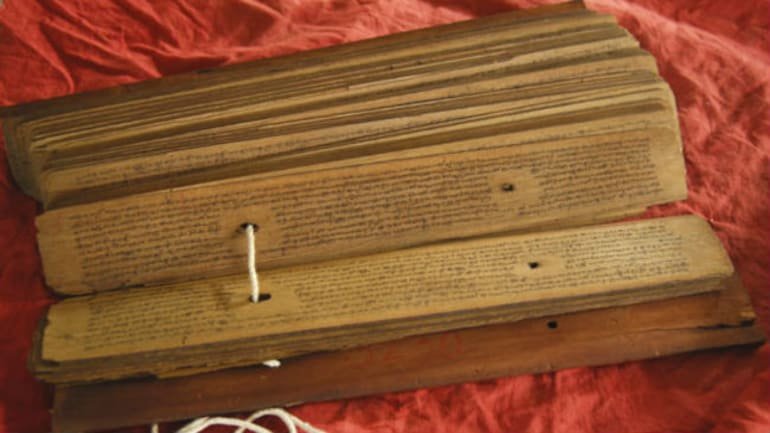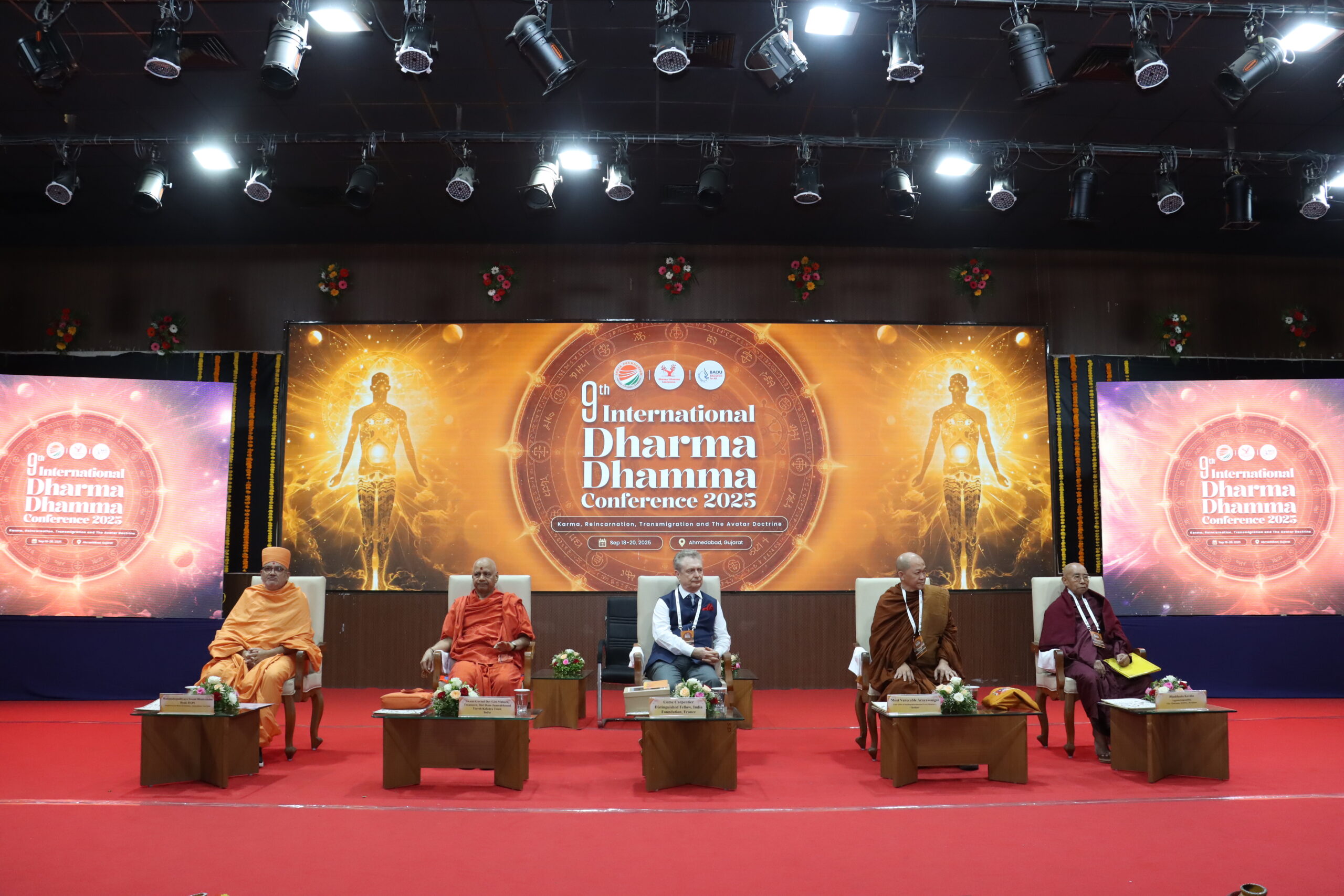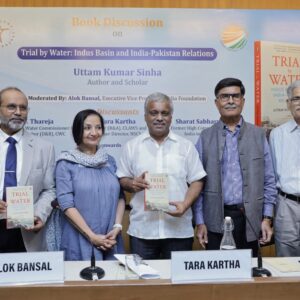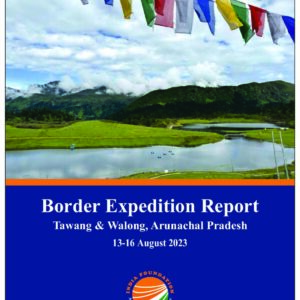Today, however impressive the strategy is, to make it work in scale and with effectiveness, implementation is key. The best strategy can come to naught, even be counterproductive if implemented poorly. There are many changes in technology that have made it easier to implement and administrate policies today. However, the essential characteristics of human nature – our thoughts and feelings — continue to be the same though the context is different. The past therefore becomes a useful tool to give us insights into how administration occurred in ancient, more complex times. Let us take a few examples from about 1000 years ago, found on the walls of temples in Tamil Nadu.
Why temples and why Tamil Nadu? Today, we see temples as primarily religious institutions. Perhaps some will also see them as repositories of art and architecture. In ancient times they were much more than that. Every aspect of government we have today and also the work done by NGOs, was performed by the temple for the local community. Temples provided employment, stored grain, safeguarded communal facilities, provided health and educational facilities and collected taxes / disbursed social schemes of the ruling king. The other vital role they played was in emotionally uniting the community. Kings therefore, found it expedient to identify themselves with God and the palaces with temples to increase the emotional connect and legitimacy to their rule.
Using the temple, the kings were able to get commitment from their people in addition to mere compliance (which is more temporary and harder to impose). Of course, rulers and subjects were also deeply moved by faith, but this socio-political motive cannot be ignored and must be seen as politically and economically expedient rather than “good” or “bad”. Temples in Tamil Nadu have the maximum number of inscriptions on their walls. Every line is only about the political/economic/social affairs of the community. There is no religious or philosophical text and therefore they become very unbiased records to study. Sadly, in other states, the inscriptions have seldom survived. While the inscriptions have been translated, published and discussed since the 19th century, they have not made it to mainstream discussions and remain only in largely academic or history-enthusiast circles.
For those who are keen to learn more about Indian techniques of administration, they provide a wealth of ideas and information, relevant for today. For this article, let us take a few examples. First, around setting process in place and secondly on implementation and compliance.
A note on the organisation of the administration will be relevant. About 1000 years ago, at the height of the Chola power over Tamil Nadu, which also included parts of Karnataka, Telangana and Kerala, the general structure was far more federal in nature than it is today. The king was expected to provide security from external aggression and internal civil war. All the other matters of life were governed locally by elected representatives who were either land owners and or merchants or tradesmen. Maintenance of water bodies, relief from floods and drought were all local issues. At best a king would support by reducing or waiving taxes. The local bodies were even powerful enough to alter their rules of membership and elections as seen in the inscriptions of Manur (Tenkasi) and Uttiramerur. In a way, “minimum government and maximum governance was the unsaid way of work. The significant decisions connected to these communities were engraved on the walls of temples with the date, and the signature of witnesses. These are known as inscriptions or epigraphs. They give us truthful and unbiased information on actual issues that came up with formulation and implementation of strategy.
Creation of a Strategy
The largest land owner in the community was the temple. The income from the temple land, paddy, was given to the king (which was either taken to the capital or stored on his behalf in the temple itself), and the temple – which used it to pay salaries. Temples would also have land that was fallow and not cultivated. To increase their income, temples were always looking for long term leases of fallow land to those who will bring it under cultivation and pay taxes from that. These taxes could be either as produce or as copper coins.
There are several inscriptions on the mechanics of setting up a system like this. Here are some examples. Tirukolakudi is in Sivaganga district in southern Tamil Nadu. Although it is close to Karaikudi, famous as a tourist spot, it receives no tourists and pilgrims come only on important festival days. The main shrine is a cave temple that is stylistically dated to at least 9th CE or earlier. It is one of the rare cave temples in the Pandya region and is remarkably hewn out of the parent hill rock and fully aligned and proportional. This has since been added to with subsidiary shrines. Below this, next to a beautiful pool of spring water is a smaller cave with an early bas relief of Ganesa; one of the oldest in the region. There are more temples further down and at the foot of the hill. All these temples are plain structures and have only 1 or 2 additional cells for pilgrims to stand and worship. We have no bhakti literature verses on these temples. At the top of the hill is a small shrine for Muruga or Karthikeya. Apart from the inscriptions, the temples are in a very scenic setting and deserve much more attention from pilgrims, tourists and researchers of medieval Indian history and politics. There are 82 inscriptions found on the walls of the various temples or on the rock of the hill itself.
An important inscription from 129 CE (ARE 1916, C66), in the reign of the Pandya king Jatavarman Sundara Pandya temple gives us an idea of the method a strategy was thought through. The long inscription is in Tamil and says, the Maheswaras, Sri Rudras, Devakanni (those who have leased out temple lands for cultivation), temple accountants gave some temple land to one Sundara Pandya Narasingadevan. He was allowed to enjoy them provided he would repair the water sources that had fallen into disuse, clear the jungle and for this use, he will pay a land tax or melvaram to the temple. The tax was dependent on the crop. It was 1/3rd of the produce for tinai (foxtail millet) , varagu (kodo millet), ellu (sesame), payaru (lentil), kuruvai (short term rice crop), Karumbu (sugarcane), kozhundu, karunai, manjal (turmeric), inji (Ginger), sengazhuneer (lotus), vazhai (banana), vazhathalai (banana tree leaves to use as eating plates?), poosani (pumpkin) etc and for trees like ma (mango), pala (jack fruit), nathai , elumichai (lemon), kulaviruli, nelli (Gooseberry), iluppai (Madhuca Longiflora) etc., The tax was 1/5th for crops like coconut, areca palms and 1/7th for dry crops according to yield. This gives us a glimpse of crops cultivated at that time. The inclusion of lemon/lime is interesting for this period.
For land that he has brought into cultivation by clearing the jungle, he had to pay 1/10th in the first year, 1/9th in the second year, 1/8th in the third year and 1/7th in the fourth year and after that a permanent tax of 1/3rd. This accounts for the effort he has to invest to make the land cultivable and is therefore fair on his efforts and the temple which was the land owner. The system can be compared to the SEZ policy of governments today. The inscription also specifies that the temple share belongs to the king and can be disposed in his pleasure.
Srirangam has the world’s largest temple and in this island and adjoining areas, the Kaveri River was prone to flooding. Land had to be reclaimed for cultivation and the similar method as above was used multiple times to show that this was a common practice across kingdoms in the Tamil country. From the reign of the Chola king, Kulotunga I (1070-1122), is an interesting donation from Arayan Sendan who lived in Ponpari village. He purchased leased land from the temple and in return funded a large orchard of jackfruit and kamugu (areca nut) trees. Also in the orchard were champak, karumugai (Cananga odorata) bushes and a pond for Sathapathi – a 1000 petal lotus. From the garden, a garland was required to be sent to the temple expressly for the night time puja.
Human nature being human nature, things were not always perfect, there were many instances when the fears of human beings made them put their selfish self-interest over the need of what was good for the community. This was punished either at the local level or by the king. Any act that resulted in reduction of revenue for the king or a threat to national security received quick and brutal punishment. Others were dealt with locally and decisions depended on the caste of the person (higher the caste, higher the punishment) or the economic prosperity of the convicted. Fines were the norm and the most severe punishment was social ostracism. There are many inscriptions on crimes and punishment that show that the justice procedure was far swifter and harsher than today.
The local assemblies performed the role of both enacting legislation and settling disputes. Since it was an agricultural economy, most disputes were connected with land boundaries and irrigation rights and issues. Criminal cases were not uncommon. History textbooks have traditionally told us the brahmins were the “priestly class”, but the inscriptions give us a more nuanced picture. The educated brahmin was well versed in the nyaya shastra or law books. That was the reason they were useful to the king – they ensured that justice was dispensed locally so that cases did not get escalated to the king who was the final judge. Today our higher courts are burdened with cases – the king wanted to avoid this and therefore supported brahmins, especially those well versed to play the role of a judge.
A 930 CE Chola inscription in the temple of Tiruninravur, Chennai is connected to the constitution and service of the judiciary. The village assembly met together and decided that the judges were elected from among themselves, provided they were qualified in legal treatises. They would serve for one year and would not serve after that for five years either as a judge or even in an administrative committee. The restriction of the five-year interval was reduced to two years in the case of relatives like fathers, brothers, or sons of those who had served before. This meant that even the relatives of a sitting judge were not permitted to take that position for two years after their relative was a judge.
The people who got together to decide this is also interesting. They were all land owners which meant they had a direct stake in the issue and all the various sub committees (variyam) were represented. The members included – the judicial assembly, the committee that maintained all water tanks that were common property of the village, the garden (orchard or oil yielding trees?) maintenance committee, the experts in shastras and the “distinguished people” or “visishta peru makkal” of the village. Sitting judges were debarred from holding other offices for their term, received one kunri of gold as payment, were expected to settle and hand over accounts at the end of the term to the committee and a fine of 20 gold coins were imposed on violators.
The Manur inscription deals with the constitution of a legislative and judicial committee. The Ambalanatha Swami temple is on a slightly raised part of land in the village of Manur. The temple is only locally known and is a small one with very few devotees. It is largely unknown outside the village and is similar to the thousands of other temples that dot the rural landscape of India. The interior of the temple is also plain and simple. Between the entrance and the main shrine are rows of pillars. One of them has a long inscription in Tamil script and Grantha script. The inscription is from the 35th reginal year of Pandya King Maranjadaiyan. Not much is known about the king and the pillar has been painted many times over so even reading the text now is difficult. The pillar has no artistic value but the inscription is of enormous value for India.
The context can be surmised from the seven clauses in the inscription as follows. The original character of the village landowners seems to have undergone a change over the years. The composition of the Sabha had also had to change keeping this in mind. In doing so, the rights of the descendants of the original land owners had to be safeguarded as well as those of the new landowners – who had either come into the village by purchasing land or as the sons-in-law of the original land owners.
The village is mentioned as Mananilainallur in Kalaikudi Nadu. The village is referred to as a Brahmadeyam – a village created by a king by giving a large parcel of land to a group of Brahmins who in turn split the shares, auctioned it to various communities and created a new village. The general body meeting was announced by beat of drum and conducted in the sacred place called Govardhana (possibly the raised area on which the temple stands?). The Vyavasta or resolution was as follows:
- The permanent members who had veto powers would include one person from the family of each of the original shareholders. They also had to be conversant with mantra brahmana inclusive of one dharma and be of good conduct. They could participate in all Mahasabha
- The above privileges in the Sabha were extended to those who already owned shares by purchase or gift or dowry provided they also had the same educational qualifications and were of good conduct.
- For the future, regardless of how they acquired property, – by purchase or gift or dowry, they cannot excersise the above powers and only be ordinary members. Depending on their property they can take part in in the deliberations at 1/4th, ½ and 3/4th.
- Those who purchased shares from the original shareholders, had to learn and pass an exam of an entire Veda including the parisista for membership of the first category.
- Those who purchased property/had rights to it by other means were to be bound by this agreement.
- Those who have no full-fledged power (sravanai) could not be in any of the subcommittees (Variyams) that worked under the mahasabha for the village.
- Sabha members who frequently obstructed proceedings by casting negative votes, were find five kasu (copper or gold coins, possibly copper) but would not lose their rights per this agreement.
While the actual working of the Sabha and the nature of the subcommittees are not documented, the entrance criteria, the rules for efficient transactions are remarkable for that period. Even more remarkable is that such far reaching political and judicial decisions of self-governance could be taken by a small village. Even by today’s standards of federalism, such autonomy is impossible to see.
How was corruption handled?
Human nature being what it is, corruption issues wasn’t very different then as it is now. Some inscriptions deal with how corruption was handled. Tiruvotriyur near Chennai has a large temple and was wealthy in the old days due to the salt pans and the port. The temple has a few inscriptions connected to corruption. In the 14th CE, several temple employees had stolen property that belonged to the temple. When this was discovered, many of them had died by then. The king’s judicial officers seized land and houses belonging to them and auctioned them off. Kalavupattam was a fine levied on those who had made deliberate errors in measuring grain. Another inscription makes mention of how, in a periodic audit in the times of a Chola king, the pon variyam or the committee that received taxes in gold was found to have made errors in both the quantity of gold they had and the quality. A lengthy enquiry convicted the members and they were socially ostracised and their lands and houses sold to pay for the principal and interest of the missing amount. In another case in Tiruneermalai temple, the temple treasury box had several gold coins missing. However, the box was sealed and the door to the room was sealed and stamped as well. So, this was clearly an inside job. The priest and a watchman confessed and their land was taken away, rights they had in the temple revoked and they were asked to leave the village. In some occasions, the property of relatives of the guilty party were also not spared.
Criminal cases are also to be found. A frequent case is of two people going out for a hunt and one dies. If there is strong evidence that it was a mistake then the guilty is asked to fund an expiatory oil lamp for the temple and endow it with some land or animals to defray the expenses.
Conclusion
The past is past and the future is the future, never the two shall meet. However, the past is the root for the fruit of the future and looking at the way issues were managed, give us the following insights –
- Political authority used a strong emotional, feeling related bond to connect with people and maintain legitimacy and reduce ideological opposition.
- Temples were used as local institutions and were vested with rights and duties.
- Except for tax collection and security, all issues were locally managed through elected representatives.
- Decisions were largely taken in a transparent manner after a lot of discussion and deliberation and meticulously recorded.
- Punishments were strict, swift and followed established procedures and were not whimsical decisions taken by old men sitting under a tree.
- The general principal was that the good of the larger community was more important than individual good.
- One hopes that a deeper study of such administrative can inform policy formulation and implementation in India today.
Author Brief Bio: Pradeep Chakravarthy is a graduate of the London School of Economics and is in the last stages of his PhD research on administration in the mediaeval period and its relevance for today. He is the author of seven books with three more in press. He has worked in HR/Learning and development with Infosys and McKinsey and now works with organisations to help change behaviour and culture through Indic wisdom from history, mythology and philosophy. He is based out of Chennai.




